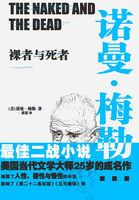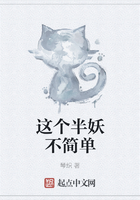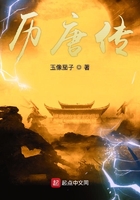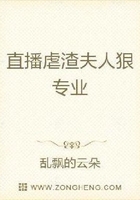In the fifteenth century everything changes.
Human thought discovers a mode of perpetuating itself, not only more durable and more resisting than architecture, but still more ****** and easy. Architecture is dethroned.Gutenberg's letters of lead are about to supersede Orpheus's letters of stone.
The invention of printing is the greatest event in history. It is the mother of revolution.It is the mode of expression of humanity which is totally renewed; it is human thought stripping off one form and donning another; it is the complete and definitive change of skin of that symbolical serpent which since the days of Adam has represented intelligence.
In its printed form, thought is more imperishable than ever; it is volatile, irresistible, indestructible. It is mingled with the air.In the days of architecture it made a mountain of itself, and took powerful possession of a century and a place.Now it converts itself into a flock of birds, scatters itself to the four winds, and occupies all points of air and space at once.
We repeat, who does not perceive that in this form it is far more indelible?It was solid, it has become alive. It passes from duration in time to immortality.One can demolish a mass; bow can one extirpate ubiquity?If a flood comes, the mountains will have long disappeared beneath the waves, while the birds will still be flying about; and if a single ark floats on the surface of the cataclysm, they will alight upon it, will float with it, will be present with it at the ebbing of the waters; and the new world which emerges from this chaos will behold, on its awakening, the thought of the world which has been submerged soaring above it, winged and living.
And when one observes that this mode of expression is not only the most conservative, but also the most ******, the most convenient, the most practicable for all; when one reflects that it does not drag after it bulky baggage, and does not set in motion a heavy apparatus; when one compares thought forced, in order to transform itself into an edifice, to put in motion four or five other arts and tons of gold, a whole mountain of stones, a whole forest of timber-work, a whole nation of workmen; when one compares it to the thought which becomes a book, and for which a little paper, a little ink, and a pen suffice, —how can one be surprised that human intelligence should have quitted architecture for printing?Cut the primitive bed of a river abruptly with a canal hollowed out below its level, and the river will desert its bed.
Behold how, beginning with the discovery of printing, architecture withers away little by little, becomes lifeless and bare. How one feels the water sinking, the sap departing, the thought of the times and of the people withdrawing from it!The chill is almost imperceptible in the fifteenth century; the press is, as yet, too weak, and, at the most, draws from powerful architecture a superabundance of life.But practically beginning with the sixteenth century, the malady of architecture is visible; it is no longer the expression of society; it becomes classic art in a miserable manner; from being Gallic, European, indigenous, it becomes Greek and Roman; from being true and modern, it becomes pseudo-classic.It is this decadence which is called the Renaissance.A magnificent decadence, however, for the ancient Gothic genius, that sun which sets behind the gigantic press of Mayence, still penetrates for a while longer with its rays that whole hybrid pile of Latin arcades and Corinthian columns.
It is that setting sun which we mistake for the dawn.
Nevertheless, from the moment when architecture is no longer anything but an art like any other; as soon as it is no longer the total art, the sovereign art, the tyrant art, —it has no longer the power to retain the other arts. So they emancipate themselves, break the yoke of the architect, and take themselves off, each one in its own direction.Each one of them gains by this divorce.Isolation aggrandizes everything.Sculpture becomes statuary, the image trade becomes painting, the canon becomes music.One would pronounce it an empire dismembered at the death of its Alexander, and whose provinces become kingdoms.
Hence Raphael, Michael Angelo, Jean Goujon, Palestrina, those splendors of the dazzling sixteenth century.
Thought emancipates itself in all directions at the same time as the arts.The arch-heretics of the Middle Ages had already made large incisions into Catholicism.The sixteenth century breaks religious unity.Before the invention of printing, reform would have been merely a schism; printing converted it into a revolution.Take away the press; heresy is enervated.Whether it be Providence or Fate, Gutenburg is the precursor of Luther.
Nevertheless, when the sun of the Middle Ages is completely set, when the Gothic genius is forever extinct upon the horizon, architecture grows dim, loses its color, becomes more and more effaced. The printed book, the gnawing worm of the edifice, sucks and devours it.It becomes bare, denuded of its foliage, and grows visibly emaciated.It is petty, it is poor, it is nothing.It no longer expresses anything, not even the memory of the art of another time.Reduced to itself, abandoned by the other arts, because human thought is abandoning it, it summons bunglers in place of artists.Glass replaces the painted windows.The stone-cutter succeeds the sculptor.Farewell all sap, all originality, all life, all intelligence.It drags along, a lamentable workshop mendicant, from copy to copy.Michael Angelo, who, no doubt, felt even in the sixteenth century that it was dying, had a last idea, an idea of despair.That Titan of art piled the Pantheon on the Parthenon, and made Saint-Peter's at Rome.A great work, which deserved to remain unique, the last originality of architecture, the signature of a giant artist at the bottom of the colossal register of stone which was closed forever.With Michael Angelo dead, what does this miserable architecture, which survived itself in the state of a spectre, do?It takes Saint-Peter in Rome, copies it and parodies it.It is a mania.It is a pity.Each century has its Saint-Peter's of Rome; in the seven-teenth century, the Val-de-Grace; in the eighteenth, Sainte-Geneviève.Each country has its Saint-Peter's of Rome.London has one; Petersburg has another; Paris has two or three.The insignificant testament, the last dotage of a decrepit grand art falling back into infancy before it dies.
If, in place of the characteristic monuments which we have just described, we examine the general aspect of art from the sixteenth to the eighteenth century, we notice the same phenomena of decay and phthisis. Beginning with Francis II., the architectural form of the edifice effaces itself more and more, and allows the geometrical form, like the bony structure of an emaciated invalid, to become prominent.The fine lines of art give way to the cold and inexorable lines of geometry.An edifice is no longer an edifice; it is a polyhedron.Meanwhile, architecture is tormented in her struggles to conceal this nudity.Look at the Greek pediment inscribed upon the Roman pediment, and vice versa.It is still the Pantheon on the Parthenon:Saint-Peter's of Rome.Here are the brick houses of Henri IV., with their stone corners; the Place Royale, the Place Dauphine.Here are the churches of Louis XIII., heavy, squat, thickset, crowded together, loaded with a dome like a hump.Here is the Mazarin architecture, the wretched Italian pasticcio of the Four Nations.Here are the palaces of Louis XIV., long barracks for courtiers, stiff, cold, tiresome.Here, finally, is Louis XV., with chiccory leaves and vermicelli, and all the warts, and all the fungi, which disfigure that decrepit, toothless, and coquettish old architecture.From Francis II.to Louis XV., the evil has increased in geometrical progression.Art has no longer anything but skin upon its bones.It is miserably perishing.
Meanwhile what becomes of printing?All the life which is leaving architecture comes to it. In proportion as architecture ebbs, printing swells and grows.That capital of forces which human thought had been expending in edifices, it henceforth expends in books.Thus, from the sixteenth century onward, the press, raised to the level of decaying architecture, contends with it and kills it.In the seventeenth century it is already sufficiently the sovereign, sufficiently triumphant, sufficiently established in its victory, to give to the world the feast of a great literary century.In the eighteenth, having reposed for a long time at the Court of Louis XIV., it seizes again the old sword of Luther, puts it into the hand of Voltaire, and rushes impetuously to the attack of that ancient Europe, whose architectural expression it has already killed.At the moment when the eighteenth century comes to an end, it has destroyed everything.In the nineteenth, it begins to reconstruct.
Now, we ask, which of the three arts has really represented human thought for the last three centuries?which translates it?which expresses not only its literary and scholastic vagaries, but its vast, profound, universal movement?which constantly superposes itself, without a break, without a gap, upon the human race, which walks a monster with a thousand legs?—Architecture or printing?
It is printing.Let the reader make no mistake; architecture is dead; irretrievably slain by the printed book, —slain because it endures for a shorter time, —slain because it costs more.Every cathedral represents millions.Let the reader now imagine what an investment of funds it would require to rewrite the architectural book; to cause thousands of edifices to swarm once more upon the soil; to return to those epochs when the throng of monuments was such, according to the statement of an eye witness, “that one would have said that the world in shaking itself, had cast off its old garments in order to cover itself with a white vesture of churches.”Erat enim ut si mundus, ipse excutiendo semet, rejecta vetustate, candida ecclesiarum vestem indueret.
A book is so soon made, costs so little, and can go so far!How can it surprise us that all human thought flows in this channel?This does not mean that architecture will not still have a fine monument, an isolated masterpiece, here and there. We may still have from time to time, under the reign of printing, a column made I suppose, by a whole army from melted cannon, as we had under the reign of architecture, Iliads and Romanceros, Mahabharatas, and Nibelungen Lieds, made by a whole people, with rhapsodies piled up and melted together.The great accident of an architect of genius may happen in the twentieth century, like that of Dante in the thirteenth.But architecture will no longer be the social art, the collective art, the dominating art.The grand poem, the grand edifice, the grand work of humanity will no longer be built:it will be printed.
And henceforth, if architecture should arise again accidentally, it will no longer be mistress. It will be subservient to the law of literature, which formerly received the law from it.The respective positions of the two arts will be inverted.It is certain that in architectural epochs, the poems, rare it is true, resemble the monuments.In India, Vyasa is branching, strange, impenetrable as a pagoda.In Egyptian Orient, poetry has like the edifices, grandeur and tranquillity of line; in antique Greece, beauty, serenity, calm; in Christian Europe, the Catholic majesty, the popular *****te, the rich and luxuriant vegetation of an epoch of renewal.The Bible resembles the Pyramids; the Iliad, the Parthenon; Homer, Phidias.Dante in the thirteenth century is the last Romanesque church; Shakespeare in the sixteenth, the last Gothic cathedral.
Thus, to sum up what we have hitherto said, in a fashion which is necessarily incomplete and mutilated, the human race has two books, two registers, two testaments:masonry and printing; the Bible of stone and the Bible of paper. No doubt, when one contemplates these two Bibles, laid so broadly open in the centuries, it is permissible to regret the visible majesty of the writing of granite, those gigantic alphabets formulated in colonnades, in pylons, in obelisks, those sorts of human mountains which cover the world and the past, from the pyramid to the bell tower, from Cheops to Strasburg.The past must be reread upon these pages of marble.This book, written by architecture, must be admired and perused incessantly; but the grandeur of the edifice which printing erects in its turn must not be denied.
That edifice is colossal. Some compiler of statistics has calculated, that if all the volumes which have issued from the press since Gutenberg's day were to be piled one upon another, they would fill the space between the earth and the moon; but it is not that sort of grandeur of which we wished to speak.Nevertheless, when one tries to collect in one's mind a comprehensive image of the total products of printing down to our own days, does not that total appear to us like an immense construction, resting upon the entire world, at which humanity toils without relaxation, and whose monstrous crest is lost in the profound mists of the future?It is the anthill of intelligence.It is the hive whither come all imaginations, those golden bees, with their honey.
The edifice has a thousand stories. Here and there one beholds on its staircases the gloomy caverns of science which pierce its interior.Everywhere upon its surface, art causes its arabesques, rosettes, and laces to thrive luxuriantly before the eyes.There, every individual work, however capricious and isolated it may seem, has its place and its projection.Harmony results from the whole.From the cathedral of Shakespeare to the mosque of Byron, a thousand tiny bell towers are piled pell-mell above this metropolis of universal thought.At its base are written some ancient titles of humanity which architecture had not registered.To the left of the entrance has been fixed the ancient bas-relief, in white marble, of Homer; to the right, the polyglot Bible rears its seven heads.The hydra of the Romancero and some other hybrid forms, the Vedas and the Nibelungen bristle further on.
Nevertheless, the prodigious edifice still remains incomplete.The press, that giant machine, which incessantly pumps all the intellectual sap of society, belches forth without pause fresh materials for its work.The whole human race is on the scaffoldings. Each mind is a mason.The humblest fills his hole, or places his stone.Retif d?le Bretonne brings his hod of plaster.Every day a new course rises.Independently of the original and individual contribution of each writer, there are collective contingents.The eighteenth century gives the Encyclopedia, the revolution gives the Moniteur.Assuredly, it is a construction which increases and piles up in endless spirals; there also are confusion of tongues, incessant activity, indefatigable labor, eager competition of all humanity, refuge promised to intelligence, a new Flood against an overflow of barbarians.It is the second tower of Babel of the human race.














